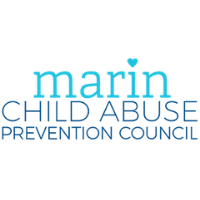
Let’s face it. It’s hard to unplug from our screens. Our devices connect us to other people, as well as to fun and useful information, but they can also have a downside. In this month’s column, we share some reminders for managing screen time as a family.
Dear CPI,
We have a toddler, a third grader, and a tween who is growing up fast. If we let them, they’d spend all their time staring at a screen, and there are many days where it feels like that’s the best way to keep the peace. I know they enjoy connecting to friends online, but I worry about what else they’re seeing, what they may be missing, and the example we’re setting for our youngest. Any suggestions?
Max
Dear Max,
Your concerns are understandable and shared by many parents and caregivers. Finding the right balance between rules or limits and gradually increasing independence is a challenge. Teaching children and teens to use screens in healthy, responsible ways teaches them self-regulation skills and prepares them for responsibilities later in life. Here are a few ideas to try:
Inform yourself. Technology changes quickly; it’s hard but important to keep up. For example, social media whistleblowers recently exposed how some companies use algorithms to steer children, teens, and adults to harmful content (e.g., searching for exercise routines leads to content that promotes behaviors associated with eating disorders). Ask teachers and other parents or caregivers what kinds of limits they’re placing on children and teens, and why. You don’t have to adopt the same limits but can learn about specific situations to discuss with your own children, such as identity theft or cyber bullying.
Talk with your children to understand their screen habits. Show interest in what your children are doing online, keeping in mind that some screen time may be beneficial. Connecting with peers, creating art or music, playing an active game—these can be healthy activities that happen on a screen. Try to avoid lecturing or criticizing them about their digital world.
Help your children think ahead and plan for safety. For teens or older children, discuss sharing certain kinds of personal or financial information, how hard it can be to remove information from cyberspace (e.g., social media posts that a future employer might see), what to do about unwanted or explicit messages, or being alert to scams and computer viruses. Thinking ahead to possible consequences is a key life skill and takes practice, so expect some trial-and-error. For younger children, monitoring usage and messages more closely is appropriate.
Watch for other problems. Too much screen time can contribute to physical health problems (headaches, lack of sleep) and mental health concerns (depression, anxiety), especially if it increases social isolation, decreases physical activity, or exposes kids to bullying. Ongoing discussions about screen time can help you notice these sooner and intervene. Encourage your children to tell you if any online interactions feel strange or threatening. Help them support others who are experiencing bullying or other online problems.
Develop family agreements for screen time. Keep them simple and realistic. Consider setting weekly (versus daily) screen time limits, defining what’s acceptable versus off-limits, and agreeing on rules about when and where screens can be used (e.g., “Put away phones while we eat,” or “Turn devices off by 10 p.m.”). Involve your kids in defining these agreements, how they will follow them, and what will happen if they ignore the rules. Remember that logical consequences, such as temporarily removing screen time privileges, are meant to be a teaching tool versus a punishment. Emphasize that the more your kids can follow the family agreements, the less you have to intervene to enforce the rules. Then set a good example with your own screen time habits.
Encourage behavior you want to see more of. When your kids are managing their screen time well, show interest and notice. Ask about the music they’re listening to or thank them for putting away their phones during meals. This helps shift attention to the things your kids are doing well instead of things you wish they would stop doing.
FINAL THOUGHTS: Teaching kids about managing their own screen time is one way to help them become confident, competent individuals. Plus, we can all use reminders!
CPI's monthly parenting article provides tips for families raising children, based on the world-renowned Triple P – Positive Parenting Program, available in Sonoma County at CPI. If you have a question or idea for a future column, please email anneb@calparents.org
This article is created by Nicole Young, the mother of two children, ages 17 and 21, who also manages Santa Cruz County's Triple P - Positive Parenting Program. Scientifically proven, Triple P is available locally through the Child Parent Institute. Our classes are listed at calparents.org/classes.
EN ESPANOL
Seamos realistas. Es difícil desconectarnos de nuestras pantallas. Nuestros dispositivos nos permiten conectarnos a otras personas, así como a información divertida y útil, pero también pueden tener un aspecto negativo. En la columna de este mes, compartiré algunos recordatorios para manejar el tiempo de pantalla como familia.
Estimada CPI,
Tenemos un pequeñito, un niño de tercer grado, y un preadolescente que está madurando rápidamente. Si se lo permitiéramos, pasarían todo su tiempo viendo una pantalla, y hay muchos días cuando esto parece ser la mejor manera de conservar la paz. Yo sé que disfrutan de conectarse con sus amigos por internet, pero me preocupo sobre lo demás que están viendo, lo que quizás estén perdiendo, y el ejemplo que estamos poniendo para el más pequeño. ¿Tiene algunas sugerencias?
Max
Estimado Max,
Sus preocupaciones comprensibles son compartidas por muchos padres y cuidadores. Encontrar el equilibrio adecuado entre reglas o límites y aumentar gradualmente la independencia es un desafío. Enseñar a los niños y adolescentes a usar las pantallas de manera saludable y responsable les enseña habilidades de autorregulación y los prepara para las responsabilidades en el futuro. Aquí hay algunas ideas para probar:
Infórmese. La tecnología cambia rápidamente; es difícil pero importante mantenerse al día. Por ejemplo, los denunciantes de las redes sociales expusieron recientemente cómo algunas empresas usan algoritmos para dirigir a niños, adolescentes y adultos a contenido dañino (por ejemplo, la búsqueda de rutinas de ejercicio conduce a contenido que promueve conductas asociados con trastornos alimentarios). Pregunte a los maestros y otros padres o cuidadores qué tipo de límites imponen a los niños y adolescentes y por qué. Usted no tiene que adoptar esos mismos límites, pero puede informarse sobre situaciones específicas que puede tratar con sus propios hijos, como el robo de identidad o el ciberacoso.
Hable con sus hijos para comprender sus hábitos frente a la pantalla. Muestre interés en lo que sus hijos están haciendo en el internet, teniendo en cuenta que un poco de tiempo frente a la pantalla puede ser beneficioso. Conectarse con compañeros, crear arte o música, jugar un juego activo: estas pueden ser actividades saludables que suceden en una pantalla. Trate de evitar sermonearlos o criticarlos sobre su mundo digital.
Ayude a sus hijos a pensar en el futuro y planificar la seguridad. Para adolescentes o niños mayores, hable sobre no compartir ciertos tipos de información personal o financiera, lo difícil que puede ser eliminar información del ciberespacio (por ejemplo, publicaciones en redes sociales que un futuro empleador podría ver), qué hacer con mensajes explícitos o no deseados, o estar alerta a las estafas y virus informáticos. Pensar en las posibles consecuencias es una habilidad clave para la vida y requiere práctica, así que espere un poco de prueba y error. Para los niños más pequeños, es apropiado monitorear el uso y los mensajes más de cerca.
Esté atento a otros problemas. Demasiado tiempo frente a una pantalla puede contribuir a problemas de salud física (dolores de cabeza, falta de sueño) y problemas de salud mental (depresión, ansiedad), especialmente si aumenta el aislamiento social, disminuye la actividad física o expone a los niños a la intimidación. Tener conversaciones frecuentes sobre el tiempo frente a la pantalla pueden ayudarle a darse cuenta de esto más pronto e intervenir. Anime a sus hijos a que le digan si alguna interacción por computadora les pareces extraña o amenazante. Ayúdelos a apoyar a otras personas que están experimentando acoso u otros problemas en el internet.
Desarrolle acuerdos familiares para el tiempo frente a la pantalla. Manténgalos sencillos y realistas. Considere establecer límites de tiempo de pantalla semanales (en lugar de diarios), defina lo que es aceptable y lo que está prohibido, y acuerden sobre reglas sobre cuándo y dónde se pueden usar las pantallas (por ejemplo, "Guarden los teléfonos mientras comemos" o "Apaguen los dispositivos a las 10 pm."). Involucre a sus hijos en formar estos acuerdos, cómo los van a cumplir y qué sucederá si ignoran las reglas. Recuerde que las consecuencias lógicas, como eliminar temporalmente los privilegios de tiempo de pantalla, deben ser una herramienta de enseñanza en lugar de un castigo. Enfatice que cuanto más puedan sus hijos cumplir con los acuerdos familiares, menos tendrá usted que intervenir para hacer cumplir las reglas. Luego dé un buen ejemplo con sus propios hábitos de tiempo frente a la pantalla.
Anime la conducta que desea ver más seguido. Cuando sus hijos manejen bien su tiempo frente a la pantalla, muestre interés y preste atención. Pregúnteles sobre la música que están escuchando o agradézcales por guardar sus teléfonos durante las comidas. Esto ayuda a poner la atención a las cosas que sus hijos están haciendo bien en lugar de las cosas que desearía que dejaran de hacer.
REFLEXIONES FINALES: Enseñar a los niños a manejar su propio tiempo de pantalla es una manera de ayudarles a volverse individuos seguros y competentes. Es más, ¡todos nos beneficiamos de estos recordatorios!
El artículo mensual sobre crianza de CPI proporciona consejos para las familias que crían niños, basados en el programa de crianza positiva Triple P de renombre mundial, disponible en el condado de Sonoma en CPI. Si tiene una pregunta o idea para una columna futura, envíe un correo electrónico a anneb@calparents.org
Este artículo fue creado por Nicole Young, madre de dos niños, de 17 y 21 años de edad, quien también administra el Programa de Paternidad Positiva Triple P del condado de Santa Cruz. Científicamente probado, Triple P está disponible localmente a través del Child Parent Institute. Nuestras clases se enumeran en calparents.org/classes.











